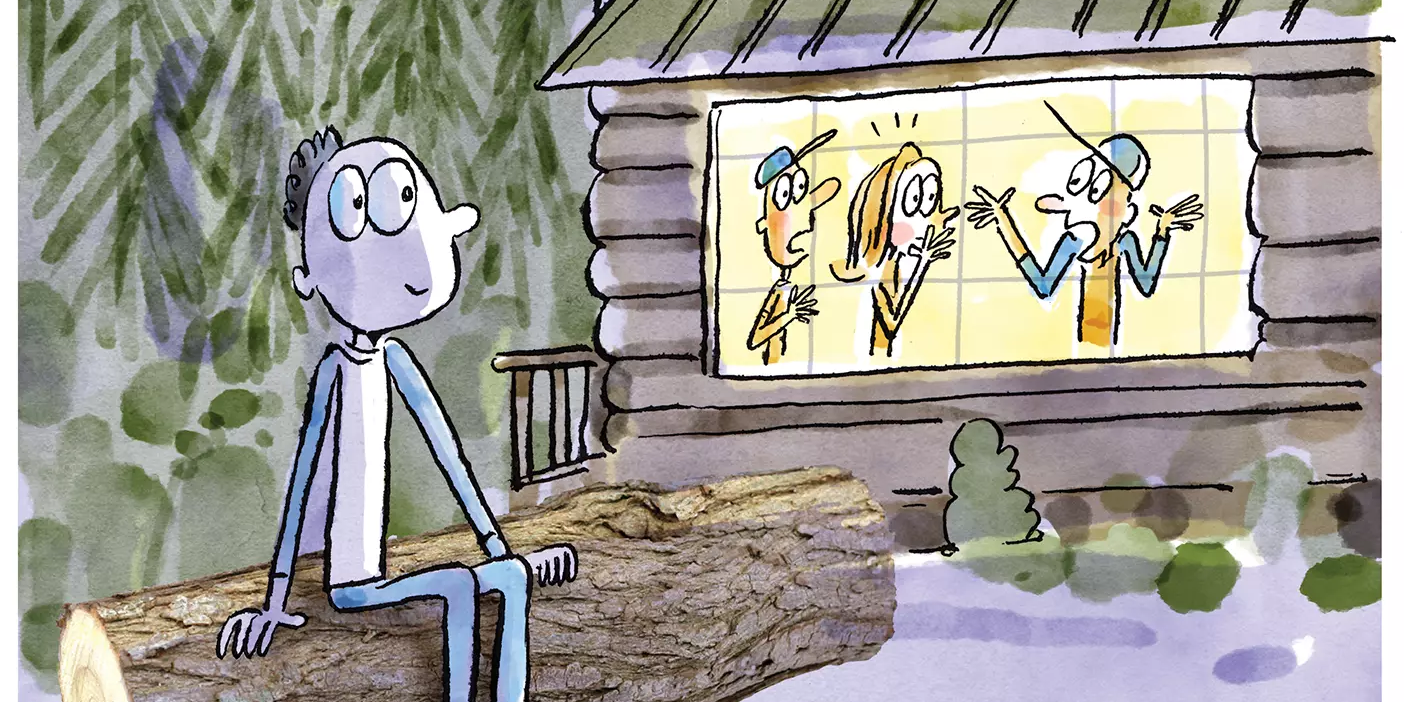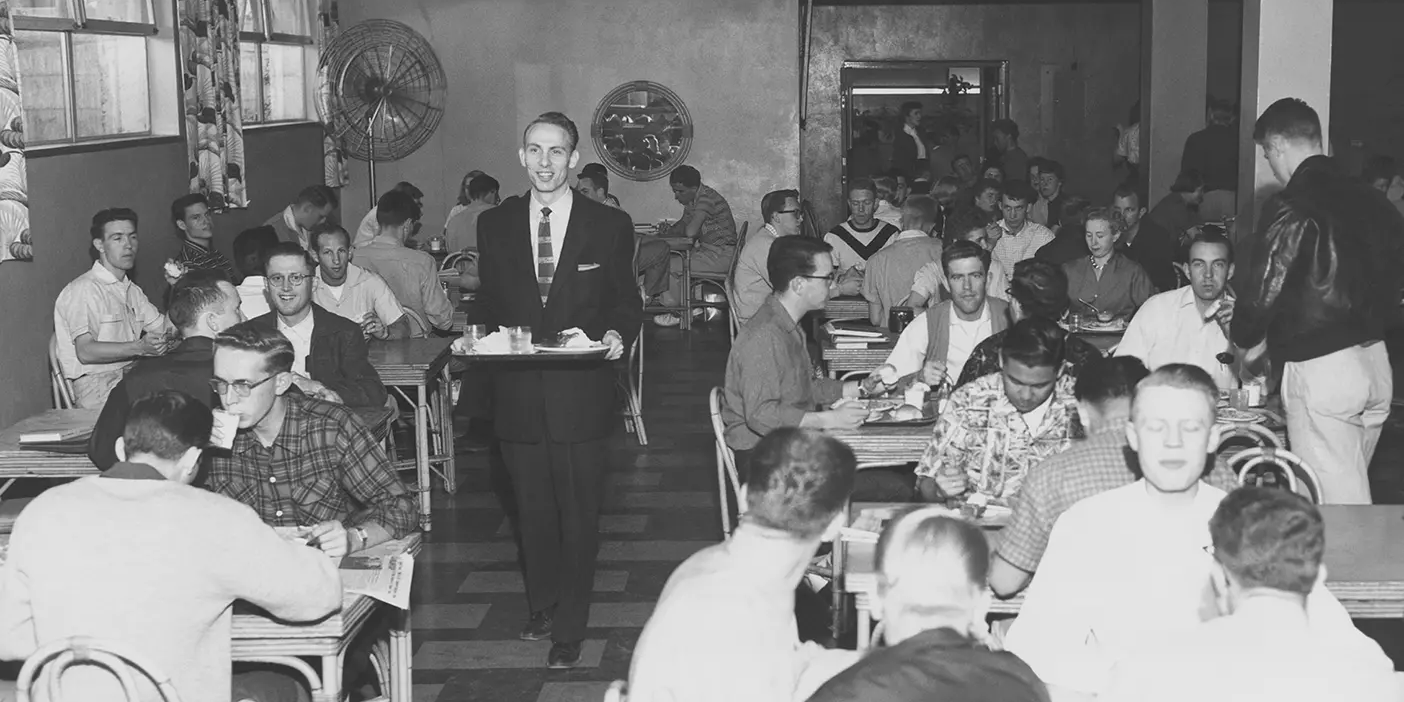Grads share their artful experiences in a beloved BYU building.

A Negative Experience
By Joanne Royce McNulty (BS ’82), Max Meadows, VA
When an HFAC art class advertised for a portrait model, I applied and was chosen from a group of 20-plus girls. I sat week after week while the students painted. I dreamed of a portrait to send to my folks at Christmas. When the pictures were displayed, I was amazed! It turned out to be a class in opposites. My dark red hair was pale green, my teeth were black, and my green eyes were red. I did not send a portrait home.
Creative Connections
By David R. Woods (BA ’96), Pocatello, ID
I can still see my mom clutching a program as we found seats in a semi-dark theater. The idea that a person could give an entire solo recital with only tympani filled me with anticipation. After the concert we left the hall feeling different than when we entered. Traces of creativity seemed to float out with us. That night the link between creators and their audiences led to wonder and change; the HFAC was the perfect venue to feel that.
Connection between artist and audience also hid in the visual artwork. When alone I would sometimes mistake that feeling as one of someone standing nearby, and I would reflexively look over my shoulder. Like the time that I recognized the sacred Hindu thread being worn by a statue. But nobody was there to ask, “Did you notice this?”
The very layout of the HFAC invited exploration and discovery. The building didn’t quite have the ever-changing staircases of a magical castle, but you did have to keep your wits about you to navigate the halls and stairs successfully.
I will always be grateful for the HFAC, which connected creators to discoverers and inspired us to change.
Multitasking Maestro
By Richard L. Young (BS ’68), Ogden, UT
In concert band in the 1960s, we performed Stravinsky’s ballet Petrushka, with its modernistic harmonies and strange rhythms. Our conductor was the extraordinary Ralph G. Laycock (BA ’41). One day during practice Professor Laycock marked 5/3 time with one hand while the other kept 3/4 time. An associate of his entered the band room of the HFAC and began conversing with him. While keeping the two rhythms going and talking over his shoulder to his colleague, Professor Laycock suddenly stopped the band, looked over to the third-chair horn player, and said he was playing a little bit flat.
We had an end-of-the-semester band banquet in the basement of Heaps of Pizza (now Brick Oven). During the program Professor Laycock pulled out a foot-long piece of garden hose in which he had made some holes. He affixed his clarinet mouthpiece to one end and played some amazing music. I had never heard a piece of garden hose sing like that.
Elevated Dining
By Stanley E. Miller (’70), South Jordan, UT
I was employed in the HFAC for several years from the late 1960s through the mid-1970s. One day several of my fellow employees in the Department of Music decided to pull a prank in one of the large elevators. We placed a rug on the floor, a painting on the back wall, and set a formal dining table with fancy china and goblets. Viola professor David J. Dalton (’54) even agreed to serenade our fancy lunch as the elevator ascended and descended. As the door opened on each floor, we acted as though this was a normal occurrence and continued eating and visiting, ignoring the speechless people who stood with mouths agape. Each time the door closed, we burst into laughter. Word spread rapidly, and soon a Daily University photographer came to take our picture for the next day’s paper.
Early-Morning Choices
By Gary L. Parnell (BA ’67), Spring City, UT
As a student custodian in 1967, I was cleaning and waxing floors in the basement of the HFAC at around 6 a.m. and found myself tempted by the high-quality pianos and harpsichords in one of the music practice rooms. I had learned a few simple hymns on my mission, so I sat down on a bench and played my version of “Choose the Right.” As I finished playing and turned, I was surprised and embarrassed to see a member of the music faculty standing by the door. I expected to receive a reprimand, but he only raised an eyebrow as I slipped quietly out of the room.

Study Soundtrack
By Michael T. Shoemaker (BS ’94), Magna, UT
At the beginning of fall 1993, I attended the first session of my comparative-literature class and discovered that I would need to read more than 2,100 pages of literature. Not being a fast reader, I was afraid and a little frantic wondering where I was going to find the time to study for this and my other five classes.
Having studied in many buildings on campus, I decided on my way back to Heritage Halls to try studying in the HFAC for the first time. I entered the south doors, went up the stairs, and sat among other students on the smooth floor of the hall. I said a silent prayer asking for help to focus, learn, and remember.
I could hear a violinist practicing somewhere. Previously any sound would distract me from studying. I had tried listening to all kinds of recorded music while studying and found it not to be useful. That day I discovered something totally unexpected. Listening to live violin music cleared my mind and sharpened my focus.
Over the following weeks, I found that I read 50 percent faster and retained what I read while listening to violin practice in the HFAC.
I have no idea who the practicing violinists were, but they inadvertently helped me that semester and every semester until I graduated. Without their musical help, I never would have scraped out a B- in my literature class.
Call for Stories: The Spirit at the Y
In his 1967 address to BYU faculty and staff, President Spencer W. Kimball implored “that every professor and teacher in this institution would keep his [or her] subject matter bathed in the light and color of the restored gospel.”
How was your BYU education bathed in gospel “light and color”? We want to hear about your spiritually edifying BYU experiences—from desperate prayers in the Testing Center to impactful sacrament meetings on campus to transformative lectures to unexpected trials and triumphs of your faith. Deadline: June 6.
Y Magazine pays $50 for stories published in First Person. Send anecdotes of up to 300 words to firstperson@byu.edu. Submissions may be edited for length, grammar, appropriateness, and clarity.












